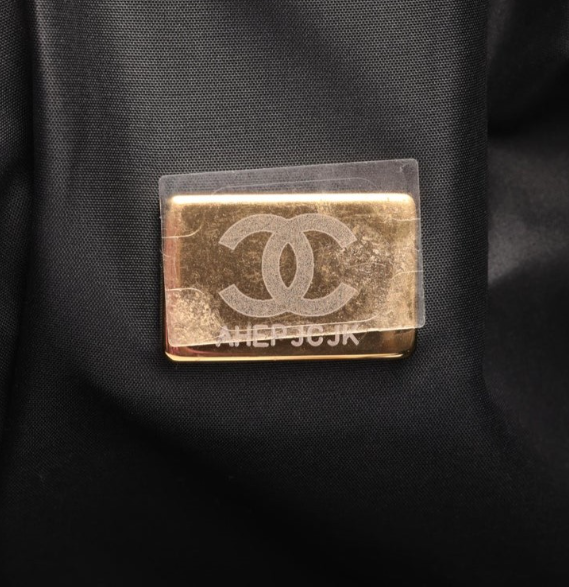
The Ultimate Guide to Understanding Chanel Date Codes: A Complete Overview
Chanel’s reputation for timeless elegance and meticulous craftsmanship is unmatched, and at the heart of the brand’s authentication process is the Chanel date code. This small serial sticker plays an essential role in verifying the authenticity and age of Chanel bags, but it’s much more intricate than it may initially seem.
Whether you’re an experienced collector, a first-time buyer, or simply curious about these elusive codes, this guide will provide you with everything you need to know. From the history of Chanel’s date codes to the changes introduced in 2021, we’ll take you through the evolution of these important markers.
What Is a Chanel Date Code?
A Chanel date code is a unique serial number printed on a small sticker typically found inside the bag. Introduced in the mid-1980s, these codes were initially used by Chanel to help track production dates, with each code indicating the year the bag was made. While the date code doesn’t specify the exact month or the factory where the bag was produced, it remains a key element in verifying a bag’s authenticity, especially when paired with other identifiers like the craftsmanship details and authenticity cards.
The Evolution of Chanel Serial Codes (1984–2021)
Chanel’s serial number system has evolved significantly over the years. Though the brand never officially released a complete guide to their serial number system, industry experts have documented a well-established timeline of changes. From the early 6-digit serial stickers to the more recent introduction of NFC microchips, Chanel’s serial numbers have been an essential tool in authenticating handbags. Here’s a breakdown of how Chanel’s date codes have evolved:
1984–1986: The First Serial Stickers (6-Digit Format)
Chanel first introduced serial numbers in 1984 as part of a broader initiative to combat counterfeiting. The first generation of serial stickers featured a simple 6-digit format starting with the number 1 (1XXXXX). These black numbers were printed on a white sticker and covered with a clear adhesive film. While the design was minimal, these early stickers marked the beginning of Chanel’s official traceable handbag production.
1986–1988: Transition to 7-Digit Stickers
In 1986, Chanel expanded to a 7-digit serial number format, starting with 0 (0XXXXXX). These new stickers were slightly more complex, with faint Chanel logos printed in the background. The stickers had a unique design element: the left edge of the sticker was indented, and the typography featured subtle distinctions, such as a strikethrough-free 0 and small serifs on the number 1. This period also saw the introduction of the authenticity cards, which mirrored the serial number inside the bag.
1989–1991: Consistent 7-Digit Format
Chanel continued using the 7-digit format through the late 1980s and early 1990s. The serial number now began with the number 1, and the stickers retained the same white background with Chanel logos printed faintly in the background. Despite the consistency, subtle design elements like the indented left edge remained, as did the unique typography used for the numbers.
1991–1994: Subtle Security Enhancements
During this period, Chanel’s 7-digit serial numbers continued to evolve. The serial numbers now began with the number 2, and while the design remained largely unchanged, the stickers became slightly more standardized. The left edge was no longer indented, and the overall design became more uniform across different bag styles.
1994–1997: Precursor to Advanced Security
Chanel maintained the 7-digit serial format during these years, starting with the numbers 3 and 4. While still featuring a white background and faint Chanel logos, the stickers now had a rectangular shape with solid edges. Although this period didn’t introduce overt anti-counterfeit measures like holograms, it marked a shift toward more controlled production and refined design.
1997–1999: Introduction of Holographic and Tamper-Proof Stickers
The late 1990s saw the first significant security overhaul to Chanel’s serial stickers. These 7-digit codes, starting with 5, incorporated new features like holographic elements and tamper-proof “X-cut” lines. Some stickers also began to include two Chanel logos above the serial number, further enhancing security. These changes made it significantly harder for counterfeiters to replicate Chanel’s stickers, marking the beginning of a more secure era for the brand.
2000–2005: Standardization and Advanced Security
From 2000 to 2005, Chanel’s serial stickers became more consistent and sophisticated, featuring two interlocking Chanel logos above the serial number and several security features like gold speckles and iridescent glitter. These stickers, which started with the numbers 6, 7, 8, and 9, were designed to be highly resistant to counterfeiting, and they were paired with refined authenticity cards that mirrored the serial numbers.
2005–2021: Peak Security and Consistency
In 2005, Chanel shifted to an 8-digit serial number system, starting with the number 10. The stickers included multiple security elements, such as the word “CHANEL” printed vertically on the right side, a vertical line on the left, and “X-cut” lines to prevent tampering. These stickers, paired with matching authenticity cards, represented the most secure and consistent period in Chanel’s history up to that point.
2021–Present: NFC Microchips for Digital Authentication
In 2021, Chanel made a significant shift by phasing out serial number stickers and authenticity cards in favor of embedded NFC microchips. These microchips, housed inside a small metal plate, contain an 8-character alphanumeric code and can only be read using Chanel’s proprietary equipment. This change represents the brand’s commitment to digital security and its drive to protect against counterfeiting in an increasingly digital world.
Conclusion
Understanding Chanel’s date codes is essential for anyone involved in buying, selling, or collecting Chanel bags. The evolution of these serial numbers—from simple 6-digit stickers to sophisticated NFC microchips—illustrates Chanel’s ongoing effort to combat counterfeiting and maintain its reputation for quality and authenticity. Whether you’re purchasing a vintage piece or a newer model, knowing how to decode Chanel’s date codes will help ensure that you’re investing in an authentic, high-quality product.
